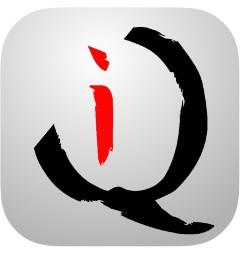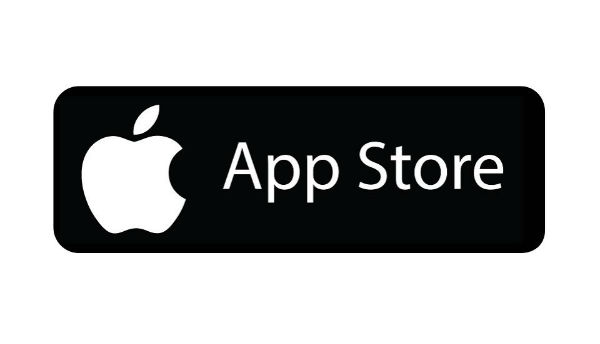Frequently Asked Questions
1. What is Qi?
Qi (?) is an energy that exist in every living thing. Qi is what allows a peron to heal from injuries, illnesses, and normal wear and tear on the body. Qi is produced/generated from one of our 3 DanTians (Upper, Middle, and Lower) with the Lower DanTian (??) producing by far the most Qi. Qi travels all over our bodies and exists even outside our bodies (within a short distance/period). Pressure points are where Qi accumulates and as a result we can help/manipulate the flow of Qi using acupuncture and massage on these pressure points. Pressure points are abundant in the palms of our hands and soles of our feet.
2. What is QiGong?
QiGong (??) is the methodology, techniques, philosophies, and teaching of Qi and its practices. Two of the most important techniques to learn in QiGong are TiQI (??) and YunQi (??). TiQi is the ability to generate and elevate Qi. YunQi is the ability to harness and channel Qi.
3. What is the difference between QiGong, ChiGung, and ChiKung?
They are all the same. The reason for the difference in spelling is due to the difference in phonetic when translated from Manderine / Cantonese to Engliish.
4. What is the difference between QiGong, Yoga, Meditation, and TaiChi?
Yoga and Meditation are very similiar. TaiChi (??) and QiGong are also very similiar. However, Yoga/Meditation is quite different from TaiChi/QiGong. The major difference being the ultimate goal of Yoga/Meditation is to achieve enlightenment of mind, body, and spirit while the ultmate goal of TaiChi/QiGong is to elevate and harness Qi's healing power. The only minor difference between TaiChi and QiGong is TaiChi is a subset of QiGong methods/techniques in which TaiChi has movements added to enhance Qi's flow and health benefits.
5. Is there a different between the Qi of a man and the Qi of a woman?
There is absolutely no difference. One person's Qi is exactly the same as another person's Qi. Infact, all living things have the exact same Qi.
6. Is Qi a real thing that I can see, touch, or measure?
Although you cannot see, touch or measure Qi, we can indirectly feel its existence due to the health benefits we achieve when practising QiGong.
7. What is the different between self QiGong practice and practising QiGong with a partner ?
They are very similar with the same QiGong methodologies and techniques (TiQi, YunQi, etc.) except the first way of practice is done by yourself alone while the other way of practice is done with another person. When practising by yourself, TiQi and YunQI by placing your palms/soles together or by placing your palms on your lower DanTian. When practising with a partner, channel Qi to the palms of your hands and place them together with your partner's palms. The ultimate goal is for Qi to flow freely and effortlessly between your two bodies. The least the resistance and closer the proximity, the easier Qi flows. YunQi together as one- use all your senses and your entire body to connect and use your mind to visualize oneness.
8. Is it better to self practice or practise with a partner?
Practising with a partner is by far the better way. It will allow you to achieve the GongLi (??) that you can never achieve with self practice. (GongLi is a measure of your ability to create Qi.) If you are able to, find as many different people as you can to practise with. However, it is not always easy to find a partner to practise with regularly and therefore self practice is also important.
9. Who (how) should i chose as my Qi Practice Partner?
Anyone can be your partner as long as you feel comfortable with this person. The higher the GongLi of your partner, the more benefit it will be for you. Also, the more partners you practise with, the better. The reason is although Qi is the same for everyone, the way Qi circulates in each person is very different. This can be visualized as a Qi map of the body as Qi travels throughout the body with various intensity represented by different colours. Each person's Qi map will look different. Practising with a partner will mutually force each person's Qi to take paths that it normally would not. This will help to open up any parts of your body that usually do not get enough Qi. The more different partners you practice with, the more Qi maps you will be exposed to thereby opening up your entire body.
10. Does eating healthy and getting regular exercise help with my GongLi?
Eating healthy or getting exercise is always a good thing. However, a person's GongLi can only be increased by practising QiGong. An athlete with a big strong body may have lower GongLi than an average person or a person with a skinny small body or a fat body. The reason is because GongLi has 2 components- WaiGong (??) and NeiGong (??). WaiGong (literally translated as outer power) is the measure of a person's outer strength (i.e.. how strong and how much he can lift / how fast he can run / how flexible and agile his is/ how long he can sustain a physical task / etc.) NeiGong (literarily translated as inner power) is the measure of a person's healing power and his speed to recovering Qi when depleted. The importance of NeiGong far out weights WaiGong.
11. Do I need to worry about any harmful effects from practising QiGong?
There are harmful effects called ZiuHuoRuMo (????). This happens when a Master is focused and is suddenly surprised by noise or interruptions. However, for a beginner (or for the rest of the 99.99% people who practise QiGong), there is nothing to worry about because his GongLi is no where close to the level needed to cause this effect. Only a master who has been practising for all his life (daily for at least 35 years) would have achieve the GongLi needed to cause this effect.
12. How long and how often should I practise QiGong?
This is all up to you. The more often and longer each practice session, the greater your GongLi will be increased and therefore the greater the benefit. There is no limit to how often and how long you can practise. However, a good start for beginners is twice a week for 20 to 30 minutes each time. But remember that the quality of your practice is even more important than the quantity. Make sure you have positive thoughts when practising QiGong. And if you are practising with a partner, trust and give up yourself entirely to each other with no inhibitions. Any negativity will hinder your progress and may erase the increase in GongLi from past practices (setting you back to the level before you started practising.)
13. I have never practised QiGong before. As a beginner, how do I start?
The best way to start is to practise with a Master. As a beginner, your ability to TiQi is nil. Trying to TiQi on your own will take you years. With a Master, he can assist your TiQi by exciting your DanTian. A Master will use his Qi to execute a QiJuDanTian (????) allowing you to easily TiQi. QiJuDanTian is a term that describes Qi all returning to the DanTian for the purpose of exciting the DanTian to produce more Qi. This positive feedback loop should be held and contained for as long as possible til it can be contained no more. The start of TiQi is achieved when this explosion of Qi being released back to the body. To gain full advantage, do not do strenuous work/exercise and get lots of rest for at least 3 days or more before the practice session.
14. What is Qi Healing and how is it different from practising QiGong?
Qi Healing also known as QiLiao (??) is done specifically to heal one's body from illness/disease while QiGong is done in general to improve/maintain one's health. Just like practising QiGong, Qi Healing can be done by oneself and on another person. The methodologies and techniques (i.e. YunQi, TiQi, etc.) are the same. For Qi Healing performed on sick/injured person, the healer suffers while the sick/injured person benefits. For QiGong Practises, both parties benefit. When performing self-healing, use the palm of your hands to channel Qi (YunQi) to your own body parts where the injuries/disease are located. When performing Qi Healing for a sick person, use the palm of your hands, sole of your feet, your DanTian, or your entire body to channel Qi to his/her body parts where the injuries/disease are located.
15. What is True Qi?
As Qi passes through our body, it loses some of its healing power and will no longer be True Qi. True Qi can be found located in our 3 DanTians (upper, middle, and lower) where Qi is produced. It can also be found in the openings of our bodies (mouth, nose, eyes, ears, etc). And finally, it can be found at one special pressure point called HuiYin. The reason True Qi can be found in our openings is because True Qi travel directly from our DanTian to our openings with very little resistance. The reason True Qi can be found at the HuiYin is that this pressure point is the closest to the lower DanTian where TrueQi accumulates in vast amount.
16. What is the difference between healing with Qi and healing with True Qi?
Using True Qi is the most powerful/effective way to heal someone. However, compared with using Qi, True Qi requires a much longer recovery period for the healer to regain his GongLi. So usually, True Qi is reserved only for healing some of the most serious/acute cases. Also, the delivery of True Qi is different from Qi. A healer delivers True Qi to the needed person by body opening to body opening. However, a healer will often chose to deliver True Qi to the HuiYin as this method is just as effective but without the hygiene/contagious issue of body opening to body opening.


